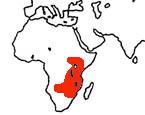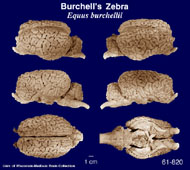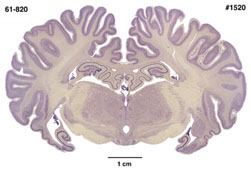|
Burchell's
Zebra
(Equus burchellii) #61-820 |
||||
|
|
Physical
characteristics and distribution
|
|
Zebras are members of the horse family, E. burchellii is the most common. They are mid-sized and thick-bodied with relatively short legs. Adults of both sexes stand about 1.4 metres high at the shoulder, are approximately 2.3 metres long, and weigh about 230 kg. Like all zebras, E. burchellii are boldly striped in black and white and no two individuals look exactly alike. All have vertical stripes on the forepart of the body, which tend towards the horizontal on the hindquarters. E. burchellii prefer but do not require short grass to graze on. In consequence, they range more widely than many other species, even into woodland, and they are often the first grazing species to appear in a well-vegetated area. They eat a wide range of different grasses, preferring young, fresh growth where available, and also browse on leaves and shoots from time to time. They are highly social and usually form small family groups consisting of a single stallion, one, two, or several mares, and their recent offspring. E. burchellii are native to S and E Angola, N and E Botswana, SE Dem. Rep. Congo, Kenya, N Namibia, SE Sudan, SW Ethiopia, Malawi, Mozambique, S Somalia, South Africa (N KwaZulu-Natal, Limpopo, and Mpumalanga Provs.; formerly more widespread, S to Orange River), Swaziland, Tanzania, Uganda, Zambia, and Zimbabwe. |
|
Description
of the brain
|
|
Animal
source and preparation
|
|
All
specimens collected followed the same preparation
and histological procedure.
|
Other
Related Resources (websites and publications)
List of Specimens | Explore Collections | Brain Sections | Brain Evolution | Brain Development | Brain Circuitry | Brain Functions | Location and Use | Related Web Sites | Contact Us | Search MSU Database | Personnel | Home



